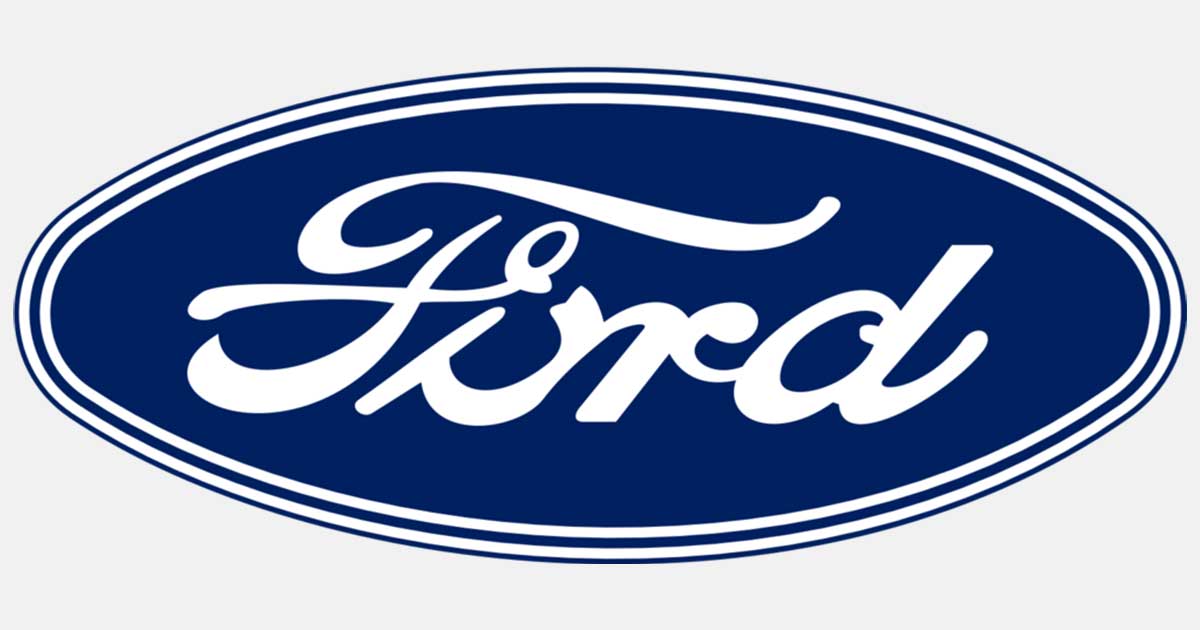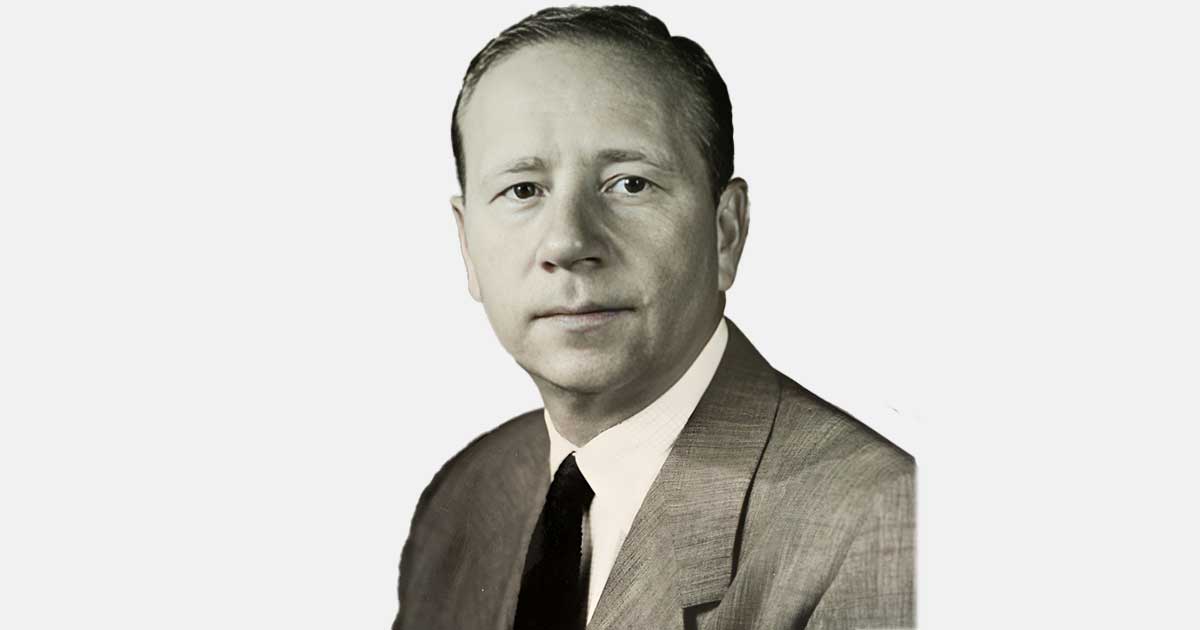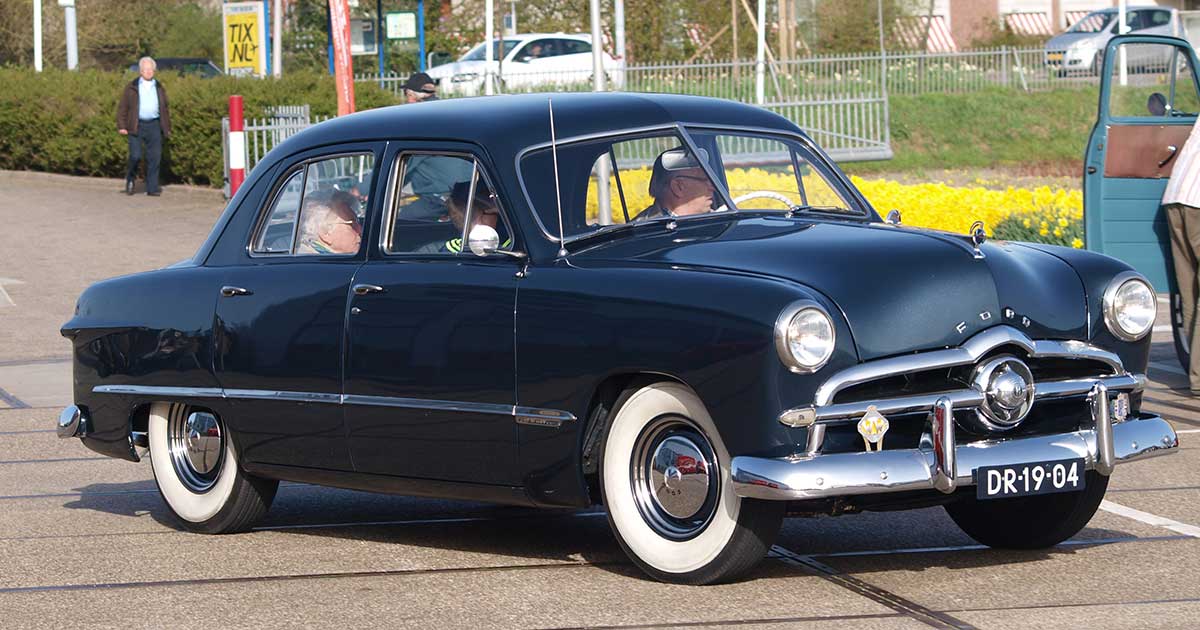The road to automobile innovation: Ford beyond the 1940s
By Aniket Gupta | 23 Feb 2024

In the previous article of this series, we explored the birth and childhood of Henry Ford, the creator of the Ford Motor Company. We also saw how, after several attempts, Henry Ford was finally able to establish the company in 1903. Over the first forty years of its existence, the company saw aggressive expansion with its cheaper cars and the innovative technology used in them.
This part will explore Ford’s rise from the 1940s to the 1960s. We will also explore some famous creations by Ford during this era.
Ford played a crucial role in World War II
Ford became an important part of the American economy as World War II hotted up.
After the devastating attack on Pearl Harbor by Japanese airplanes on 7th December 1941, Ford Motor started supporting America’s involvement in the war. It joined other American firms that had supported U.S. President Franklin D. Roosevelt’s ‘Arsenal of Democracy’ call to build a powerful armaments industry. Henry Ford, who was 76 at the time, did not make any major decisions regarding the company’s role in the war. It was his son Edsel who made all the major decisions.

To help aid America in the war, Ford manufactured 390,000 tanks and trucks, 27,000 engines, 270,000 Jeeps, more than 8,000 heavy B-24 Liberator bomber aircraft, and thousands of parts, gun mounts, and machine tools.
Ford Motor set up the Willow Run manufacturing complex in Michigan for the production of B-24 bombers, although the production unit faced some initial setbacks due to a lack of experience among the manufacturers.
.jpg)
Ford Motor even helped in production for the Axis powers (the enemy - Germany, Italy, and Japan). Several reports were coming out during the war that Ford plants in German-occupied France helped the Nazis manufacture war automobiles, mainly conventional trucks, and Maultier half-tracks. Fortunately for Ford, the U.S. Treasury Department never found any conclusive evidence to support these reports.
Years later, in 1998, lawsuits were filed, focusing on Ford’s alleged war profiteering through business dealings with Nazi Germany. After WWII, many managers from the Nazi era had been able to retain their jobs in Ford’s German division.
Ford even helped Britain during the war by constructing a new factory at Trafford Park in Manchester. Ford also collaborated with Rolls-Royce to help manufacture over 34,000 Merlin aero engines.
Tragedy struck the Ford family during the war in 1943, when Edsel Ford, the President of Ford Motors, passed away due to stomach cancer. His father, Henry Ford, who was 78 at the time and very sickly, decided to resume his post as president of the company. This was not the best decision at the time, as some senior employees of the company felt that Ford Motor Company would collapse during the war in case Henry Ford passed away suddenly. Even the Roosevelt administration had planned to nationalize Ford Motors if things went south, to ensure their vital production demands for the war were met.

In 1945, after much deliberation, Henry Ford decided to step aside and hand over the company to Henry Ford II. This was a vital moment for the company, as Henry Ford II, famously known as Hank the Deuce, would later usher Ford Motors into its golden era.
Post-war Ford
When Henry Ford II joined Ford Motors in 1943, he was in a management position. By the time he took over the role of president, the company was losing around $9 million ($154,208,500 in 2024 dollars) every month. The company, although it made a lot of money during the war, had outdated car designs, declining domestic sales, and many European factories damaged in the war.
The automobile industry started to change rapidly after the war ended. During the war, most of the leading automobile manufacturers focused on production for the military. Hence, catering to civilians had been slowed down. After the war, the demand for civilian cars rose, and newer models with more powerful engines started to come into the market. And there was a growing demand for cars equipped with radios.
Ford also started to face intense competition domestically from companies such as General Motors (GM) and Chrysler, as well as from carmakers overseas. In Europe, companies such as Volkswagen and Fiat revamped their operations and grew stronger. Similarly, Japanese automobile manufacturers such as Nissan and Toyota entered the market with affordable, fuel-efficient cars.
Ford Motors was in dire need of new innovative ideas to compete efficiently in the growing and changing automobile industry after the war. There were even growing concerns among the company’s directors about whether Henry Ford II was the right person to undertake such a mammoth task. Concerns that the new Henry quickly dismissed through his aggressive management style.
The first thing he did as president of the company was bring in new, younger employees into management positions. He firmly believed that the existing managers in the company were too old to understand what the newer generation of consumers wanted. He believed younger people could help Ford Motors stay ahead of the curve.
Amid all these changes, the company had to endure another loss as its founder, the original Henry Ford, passed away on 7th April 1947. His funeral service was attended by more than 20,000 people, showing how popular he had become with the American public during his lifetime.
Henry Ford II takes charge
Henry Ford II quickly assessed his position as company president. He knew he was inexperienced and needed good guidance. He also wanted to appoint younger people to bring about dynamic change.

He fired many of his grandfather’s close associates from the company and appointed John Bugas as his second-in-command. He also hired some seasoned executives from some rival companies, such as Ernest Breech, a former General Motors executive, and Lewis Crusoe from Bendix Corporation. The Ford boss expected the Breech-Crusoe duo to provide the core business expertise required to grow the company.
Ford even hired ten young people from the U.S. Army Air Force, who popularly came to be known as the “Whiz Kids.”

The “Whiz Kids” are most famously known for their role as the design team behind the 1949 Ford car. The team successfully transformed their car concept into production within 19 months, playing a crucial role in re-establishing Ford as a formidable force in the automotive industry. Upon its market debut, the car garnered an impressive 100,000 orders on its very first day.
Henry Ford II made it clear to his employees that he aimed to manufacture stylish and safe cars for his customers. He even stated that he was ready to spend more on design and market research to make his car more relevant to the general public.

In 1954, Ford Motor launched the Thunderbird, more commonly known as the T-Bird. This was a two-seater convertible that looked very similar to the Chevrolet Corvette that was launched in 1953. Ford marketed the car as a personal luxury car. In 1958, the company added a second row of seating in the original two-seat T-Bird. The car was sold from 1954 to 2005, and more than 4.4 million of these cars were produced during this time.
In 1956, Ford became a publicly traded corporation, while the Ford family maintained a 40% controlling interest in the company.
The failure of Edsel
It may look like everything Ford Motors sold was a hit; but that was not the case. The company had also produced some ‘lemons’. The most famous one would be the Edsel brand Ford launched in 1958. This brand was launched to pay tribute to Henry Ford II’s late father and the former president of the company, Edsel Ford.
In the year leading up to its launch, Ford heavily invested in an advertising campaign, promoting Edsels as futuristic cars. Although it had advanced features for its price range in 1958, the Edsel line was a commercial failure. Launched during a recession, which impacted sales of medium-priced vehicles, Edsels garnered a reputation for being overhyped, unattractive, and low in quality.
After a staggering loss exceeding $250 million (around $2.5 billion in 2024 dollars) on the development, manufacturing, and marketing of the Edsel line, Ford discontinued the brand in 1960.
The Le Mans Story
Henry Ford II had a lifelong dream of entering the racing arena, as he felt racing and automobiles were almost synonymous with each other. Unfortunately, Ford Motors didn’t have any sports cars that it could have used to enter racing. So in 1960, Henry Ford II decided to buy Ferrari, the Italian sports car manufacturer, for $10 million. After hard negotiations with Enzo Ferrari, it seemed that the deal was about to be closed. Unfortunately, in the last rounds of negotiations, Enzo Ferrari strongly opposed a clause in the contract put in by Ford. The clause stated that Ford would control all the budget and executive decisions related to races instead of Ferrari. Enzo wasn’t going to budge on this demand and immediately pulled out of the negotiations, stating the last thing Henry Ford II wanted to hear: There is something your money couldn’t buy.
Angered by this, Ford quickly set up an R&D division to manufacture its own sports car and enter one of the most prestigious motorsports: the 24 Hours of Le Mans. Finally, after several tries in 1964, Ford Motors created one of the greatest American sports cars ever, the Ford GT40. Under the leadership of Carrol Shelby, the Ford GT40 Mk II entered the 24 Hours of Le Mans race in 1966, winning it and breaking Ferrari’s winning streak since 1960. Ford won the Le Mans for the next three years until 1969.
Ford had had his revenge on Ferrari.
.jpg)
On 13th July 1960, Henry Ford II was elected chairman of the company, and on 9th November 1960, he resigned as president of Ford Motors. His vacant presidential post was filled by Robert McNamara, who became the first non-Ford president of the company.
Battle of American Muscle Cars
In the mid-1960s, Americans became attracted to drag racing. Drag racing involves a form of motor racing where automobiles engage in competition, typically in pairs, to be the first to cross a set finish line. U.S. carmakers saw an opportunity to start selling heavier, faster cars to ride this new trend. These cars came to be known as muscle cars. Although these cars existed before the 1960s, they were not nearly as popular as other cars.
In the early 1960s, the popularity and performance of muscle cars saw significant growth. This era marked a fierce competition for drag racing supremacy between Mopar and Ford. Mopar stands for Motor and Parts, and was an alliance between Dodge, Plymouth, and Chrysler, to provide authentic parts for their cars.
In 1963, to compete in muscle car supremacy, Ford rolled out 200 factory-built Ford Galaxie ‘R-code’ cars designed exclusively for drag racing. These full-size beasts could race through the quarter-mile in just over 12 seconds. The upgrades boasted fiberglass panels, aluminum bumpers, and traction bars. Although these cars were not used for everyday street use, for the road, there was a tamer version of the Galaxie 427 featuring the ‘Q-code’ engine, generating 410 hp.
.jpg)
Then, in 1964, Ford created a smaller and lighter Ford Thunderbolt. The Thunderbolt had acrylic windows, fiberglass/aluminum body panels, and bumpers. The car was able to complete a quarter-mile race in just 11.76 seconds. While technically road-legal, the Thunderbolt wasn't exactly fit for everyday street use and was even deemed unsuitable for regular trips to and from the drag strip. In total, only 111 Thunderbolts were manufactured.
The Ford Mustang
The Ford Mustang was the ‘hero product’ Ford had been desperately looking for since the war had ended. The Mustang is the longest-produced Ford car and has had seven generations of production. Known for its design and power, the Mustang soon became an iconic symbol, etching its name as one of the most popular cars ever.
_-_28540253076.jpg)
The Ford Mustang was initially predicted to sell 100,000 units annually, but it surpassed expectations. Launched on 17th April 1964, the car achieved remarkable sales, surpassing 400,000 units in its inaugural year, emerging as the most successful vehicle launch since the 1927 Model A. In just two years since its launch, Ford was able to sell one million Mustangs. Remarkably, in August 2018, Ford sold its 10-millionth Mustang.
Donald N. Frey, the head engineer for the project, is heavily credited with the success of the Mustang. Lee Iacocca, then general manager of Ford who later joined and revived Chrysler, led the project and, together with Frey, launched the car into the markets in just 18 months.
Ford since Mustang
To sum up, after the Second World War, Ford Motor Company found itself in a crisis. However, it managed to recover its place in the American automobile market. Henry Ford II, the founder’s grandson, took charge and steered Ford Motors through the turbulent years, navigating the challenges of post-war reconstruction and shifting consumer demands. Under his leadership, the company embraced innovation, introduced iconic models, and, of course, won the Le Mans 24 Hours race.
But the role of Ford Motors in automobile innovation doesn’t end here. The company continued innovating in the later decades of the 20th century, though with a different approach. What Ford did, how they overcame some more challenges, and how they embraced the 21st century will all be discussed in the next part of this series, ‘The road to automobile innovation: Ford’s quest from 1980 onwards’.



















